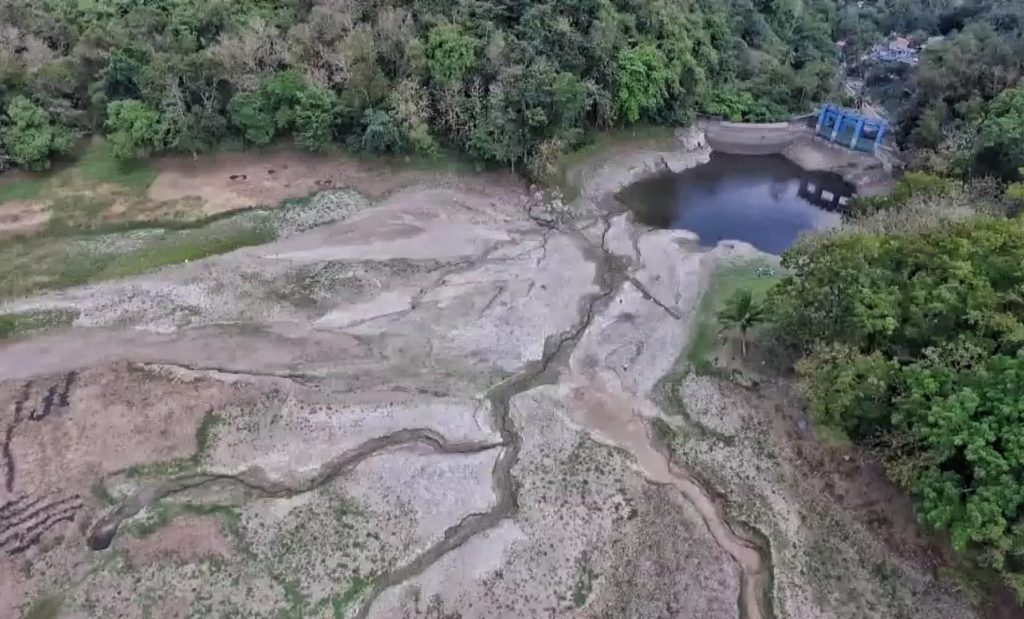Gov’t urged to explore wastewater treatment, desalination options to address water woes

An aerial view of the of the Buhisan Dam taken on March 11, 2019, as the dry spell brought on by the El Niño weather phenomenon takes a toll on crops, fish farms and water supply in Cebu. /Tonee Despojo
CEBU CITY, Philippines — Amid the clamor for water supply in several areas in Cebu due to the effect of the dry season, an option that can be explored by the government and large firms can be the conversion of wastewater and saline water into potable water.
Engineer Edgar Sibonga, executive director of the Provincial Water Resources Authority (PWRA), said treatment of wastewater and saline water into potable water could become a “cheap” solution to lack of water if there would be a firm that would be willing to invest on a wastewater treatment and desalination plant.
According to Sibonga, producing 1,000 liters of potable water from salt water may only cost P150 per cubic meter or equivalent to 1,000 liters.
Read more: Cebu City wells seen as remedy to water supply problems
Meanwhile, treatment of water from septic tanks into potable water could only cost a total of around P50 per cubic meter.
“Desalinating saltwater would cost us about P150 per cubic meter. That is already potable. But, if we take water from the septic tank, that is even cheaper. Converting water from the septic tank into ordinary water which we can use to water the plants or in our air conditioning system at home, that would only be around P10,” Sibonga explained.
“But that ordinary water now which we spent P10 on, can be converted to potable water by the usual technology which we will only be spending around P30 to P40,” he added.
However, Sibonga said that the said “cheaper” cost to produce potable water would be dependent on the amount of water production per day.
“But I am talking here of economic scale, massive volume like 20,000 cubic meters per day,” Sibonga said.
Read more: Cebu City’s Sambag residents get free water rations from MCWD
Baltazar Tribunalo, Provincial Disaster Risk Reduction and Management Office (PDRRMO) chief, in a separate interview, also echoed the need to explore wastewater treatment and desalination as a means to cope with the demand on water supply especially on island communities.
Kinatarcan Island, for instance, Tribunalo said, has noted a significant salt water intrusion level. Salt water intrusion is the movement of seawater into the freshwater aquifers.
Tribunalo said that they were already in talks with the Office of the Governor for the building of a desalination plant to meet the water needs of the residents there.
Read more: Provincial water management body seeks passage of water code
The PWRA is also pushing for the passage of the Provincial Water Code which seeks to regulate water extraction and drilling activities.
With the Water Code and the creation of executive offices that would implement it, Sibonga said they would be able to keep a more comprehensive monitoring on water drilling projects and prevent over-extraction which vacuums freshwater aquifers causing saltwater to come in./dbs
Disclaimer: The comments uploaded on this site do not necessarily represent or reflect the views of management and owner of Cebudailynews. We reserve the right to exclude comments that we deem to be inconsistent with our editorial standards.
